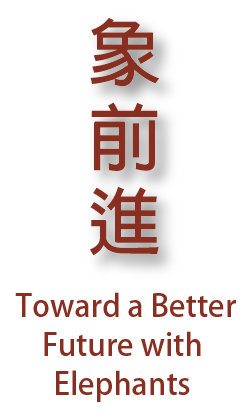象親象愛
Compassion and Love for Elephants
林旺慶生會
Lin Wang’s Birthday Party
由於林旺從圓山時代就已經是臺北市立動物園的代表動物,民眾通常是以「去看林旺爺爺」來代替「去動物園」,所以在1983年,當林旺66歲,年紀幾乎已經是動物園大象的長青代表時,臺北市立動物園就開始每年都幫林旺慶生。
In Taiwan, the phrase “visiting grandpa Lin Wang” used to be synonymous with going to the zoo. Lin Wang was already a celebrity when Taipei Zoo was located at Yuan Shan. In 1983 at the age of 66, Lin Wang was the headliner among the older elephants.
這個慶生活動持續了20年,直到林旺以86歲的高齡過世為止。雖然林旺在2003年過世,但是即使到現在,臺北市立動物園仍舊每年在園慶時舉辦慶生會,只是看林旺的地點,從熱帶雨林區變成教育中心。
Taipei Zoo began hosting celebrations on Lin Wang’s birthdays, an annual tradition that continued for 20 years until the elephant’s passing at the age of 86.
After Lin Wang’s passing, the zoo continues to organize events at the education center to commemorate the beloved elephant’s birthday. The only change is that visitors have to stop by the Education Center to see Lin Wang, instead of the Tropical Rainforest Area.
林旺,不僅僅是一隻大象,是歷史的證人,也是臺灣民眾的共同記憶。
Lin Wang was more than just an elephant. He was a witness to history, and is a part of Taiwan’s collective memory.
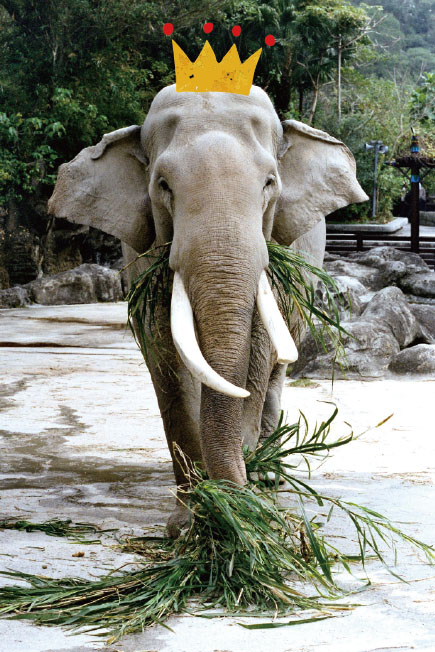
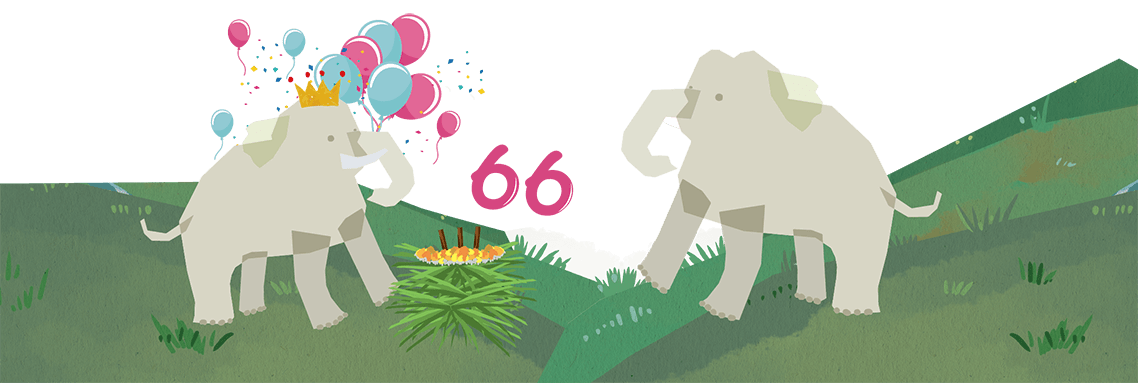
生態旅遊
Ecotourism
根據國際生態旅遊協會及國際自然保育聯盟的定義:「生態旅遊是一種負責任的旅遊,顧及環境保育,並維護地方住民的福利」。行政院永續發展委員會在2003年底提出的「生態旅遊白皮書」中也進一步將生態旅遊定義為「在自然地區進行的旅遊形式,強調生態保育的觀念,並以永續發展為最終目標」。
這類遊憩行為希望遊客能夠尊重自然、藉由旅行獲得生態及野生動植物保育的觀念。不過大部分的人只是看字面的意思,以為只要是旅程中有看到動植物、去到非城市的地方就算生態旅遊。導致近年來經常有遊客到東南亞國家觀光時會去坐象轎、騎大象、餵大象吃東西,誤以為這就是生態旅遊,但有時反而會衍生出大象的動物福祉問題。所以,何謂生態旅遊請先三思。
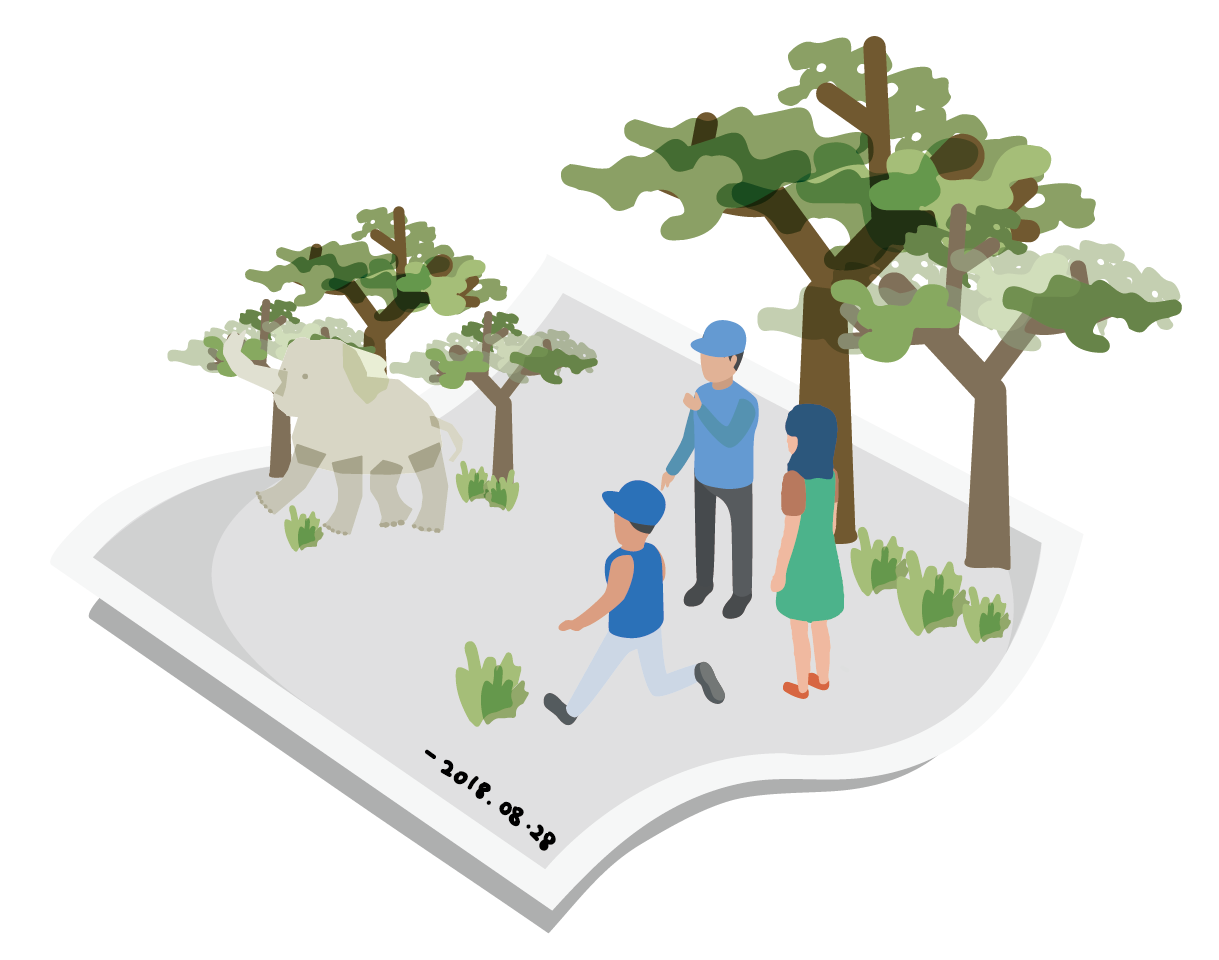
The definition of ecotourism, according to The Ecotourism Society and IUCN, is a responsible form of tourism that incorporates education on environmental protection and supports the interests of local residents. Taiwan’s National Council of Sustainable Development published a white paper on Taiwan ecotourism in 2003, which further emphasized ecotourism’s role in education and sustainability.
This tourism form advocates respect for nature and engenders the value for wildlife protection through recreational activities. However, ecotourism has often been misunderstood. Many travelers are satisfied as soon as they are able to get away from urban areas and interact with plants and animals. In southeast Asia, tourists often ride and feed elephants, mistaking their activities for ecotourism. At times, such practices may result in infringement of animal welfare. Think twice about what ecotourism really stands for before hopping on for a ride.
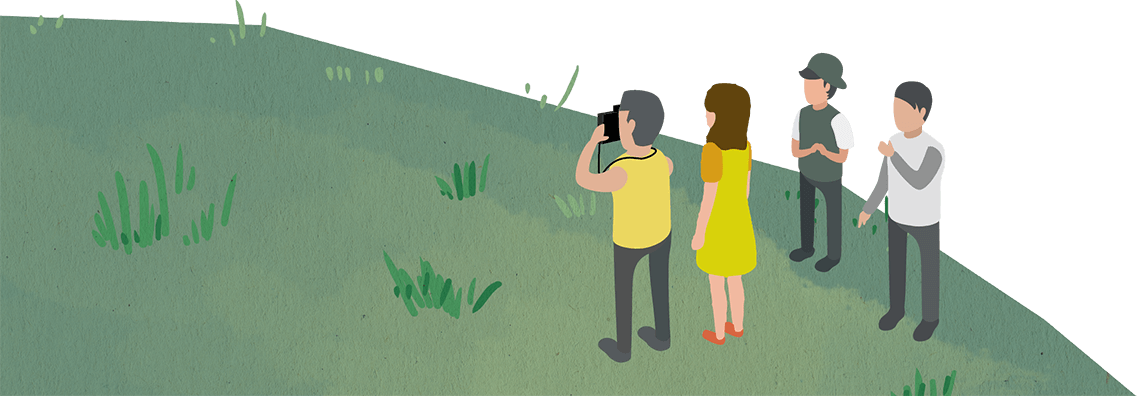
象糞變黃金
Turning Elephant Dung into Gold
象糞變變變
Recycling Elephant Dung
只要是動物會吃就會拉。由於大象每天吃下的食物量非常多,製造出來的排遺當然也很多。於是有些動物園或大象保育中心就會將象糞回收再利用,做成堆肥、造紙、燃料能源、蚊香、止痛劑,甚至還有象糞咖啡或是啤酒呢。
All animals eat and excrete. Elephants consume enormous amount of food daily and produce a substantial amount of dung. Some zoos began to collect and elephant dung for use as fertilizer, paper, fuel, pest repellant, pain killer, and even for coffee and beer!
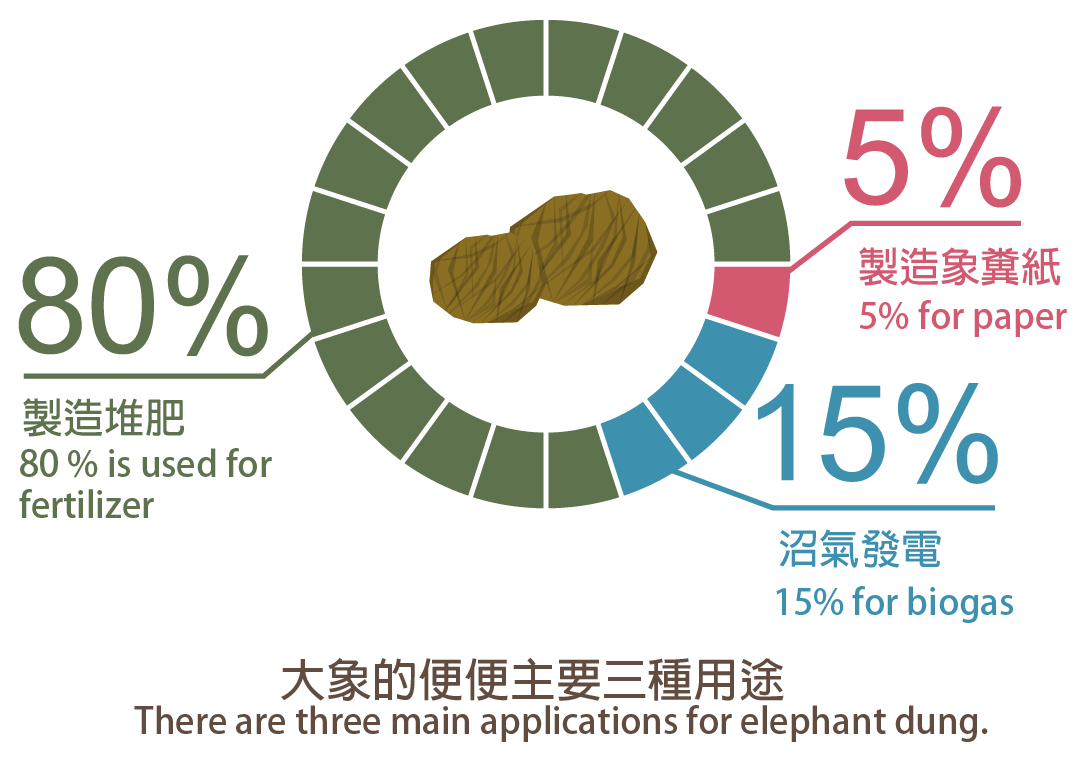
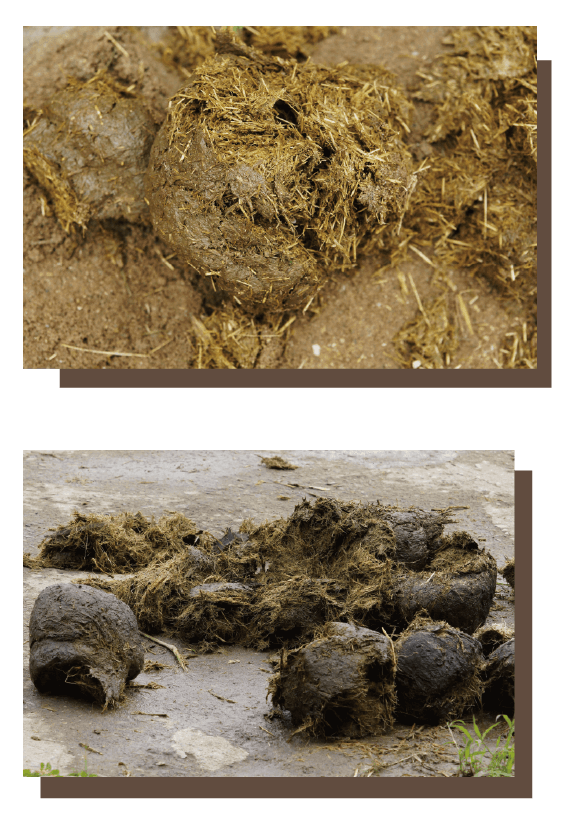
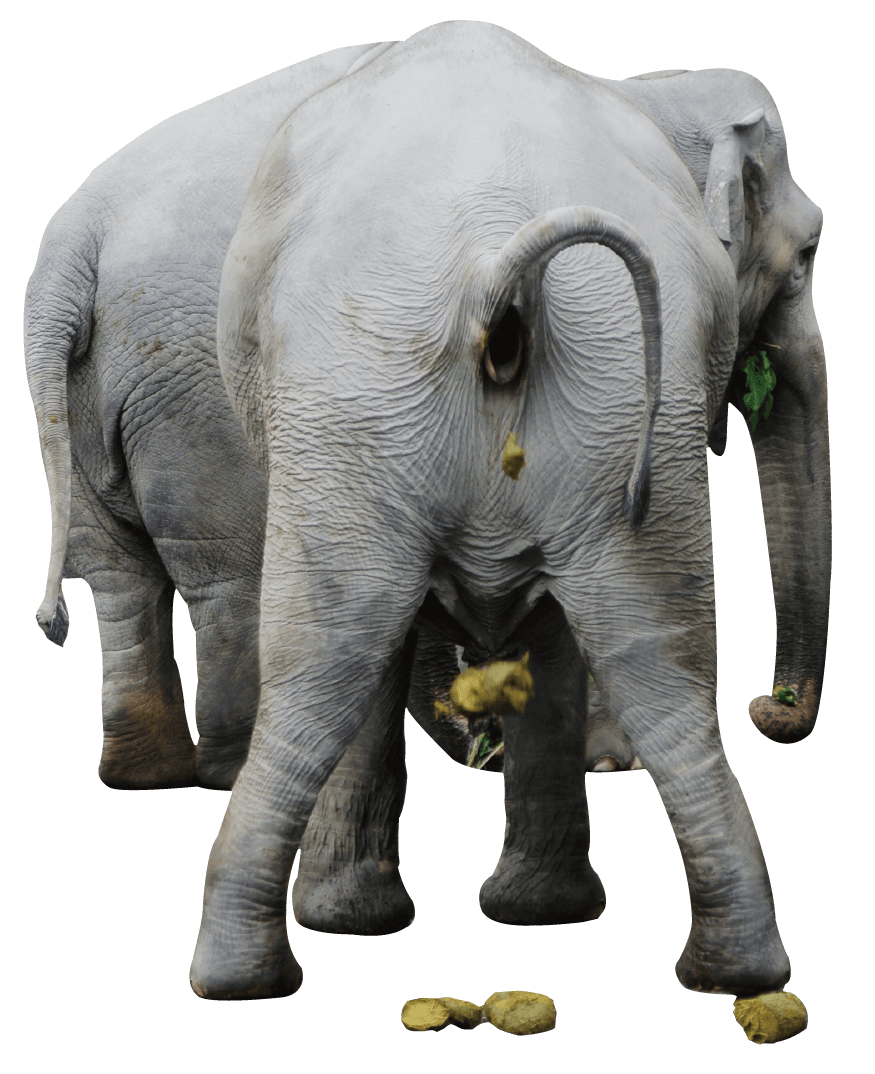
大象便便有妙用
Innovative Use of Elephant Dung
如果以食量來說,在動物園所照顧的動物之中,大象的「伙食費」排行可說是數一、數二名列前茅。正因為如此,在泰國清邁北部大象保育中心,為了能照顧那些受傷或醫療中的大象們,就得運用各種方式讓大象也能夠幫忙為中心賺取一些收入。於是將大象的糞便回收再利用,就成為其中一項籌措營運資金來源的好方法。以堆肥、造紙或沼氣方式轉化成為商品的象糞經濟,至少可以補貼部分經費以再運用於保育工作與飼養大象。
From the perspective on the amount of food consumed per meal, food for elephants likely ranks among the top three on the “animal with the most expensive meal plan” list for zoos. As a result, zoos begin making elephants self-subsidizing. The Chiang Mai Elephant Sanctuary, for example, stages elephant performances and uses dung recycling to as ways to acquire funds for its elephant which are injured or undergoing medical treatment. The elephant dung economy which capitalizes on the commercial value of the refuse utilized as composts, papermaking ingredient, and marsh gas emission, ensures that part of the income goes into subsidizing conservation efforts and feeding the elephants.
象糞紙的製作其實也是要看天吃飯。在晴天時,抄好的象糞紙漿只要半天就會乾。在雨天時需要三天,要是雨太大的話,象糞就會發霉無法使用。象糞紙的顏色會依大象吃的食物而有所不同。吃棕櫚葉的話,紙的顏色暗;吃椰子的話,紙的顏色亮。而依照象糞紙要製作成一般的著色畫紙、書籤、筆記本、扇子、卡片等等不同,再把象糞中的纖維攪碎成各種質地。
However, the efficiency and quality of paper production varies with the weather and the elephants’ diet. In sunny weather, paper pulp from elephant dung can dry in half a day, but on rainy days it could take 3 days to dry. If the rain is too heavy, the pulp can get moldy and become unusable. The color of the paper varies with the elephants’ food. A diet of palm leaves produces darker colors while eating coconuts produce lighter shades. The fibers in elephant dung are ground to the desired coarseness for different products. Bookmarks, fans, notebooks and greetings cards, all need different pulp textures.


